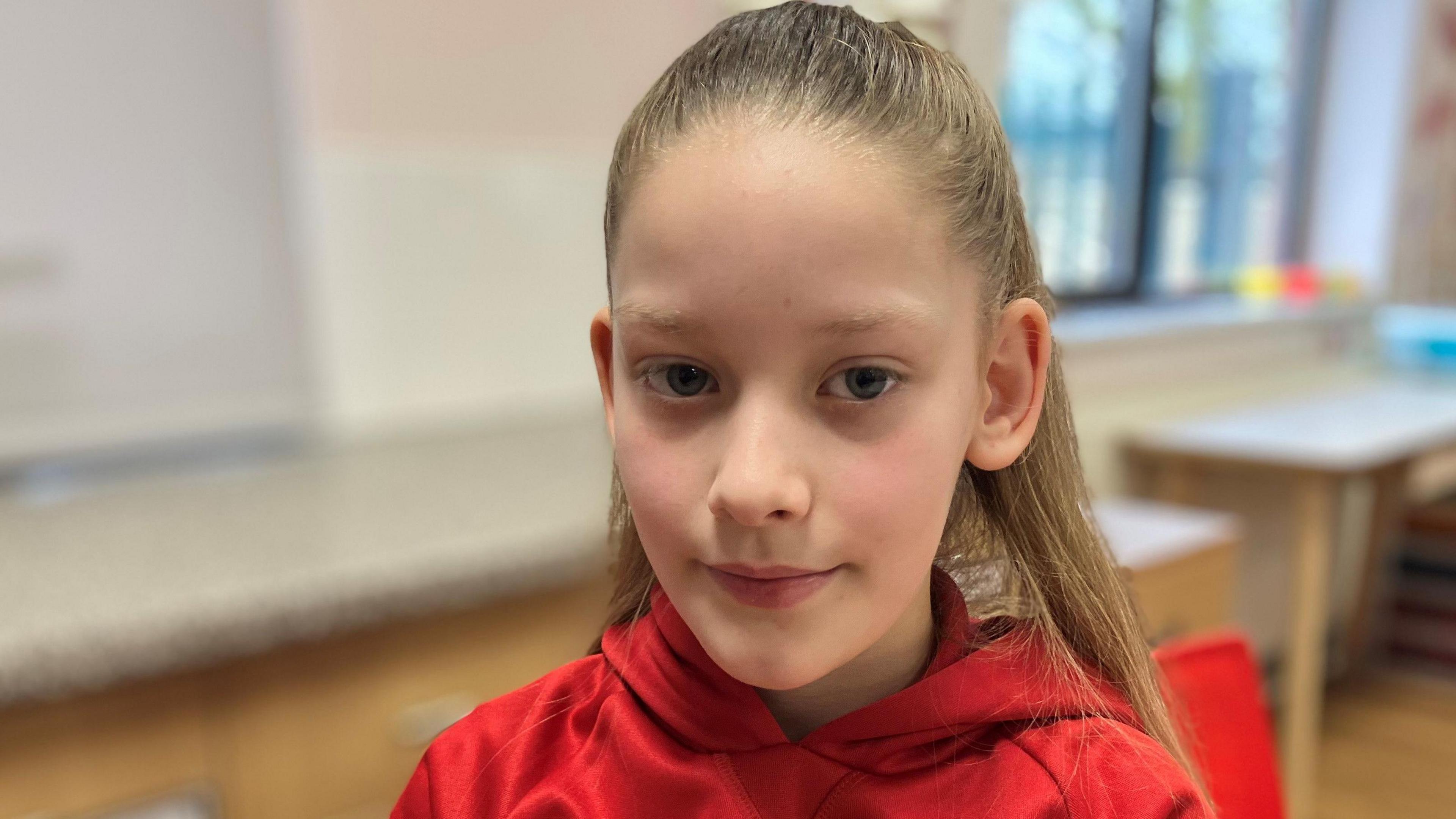Why Wales' sign language GCSE is being delayed

Khyas, 11, has been learning British Sign Language at his primary school
- Published
In British Sign Language, like other languages, signs can vary depending on where you live.
Colours, numbers and phrases such as "good morning" are different from area-to-area.
Extra time to work out how dialects are reflected in Wales’ new GCSE is one reason the qualification will be delayed by a year.
It was due to be introduced in September 2026, but it will now start being taught from 2027.
One expert said a pause was “good” to make sure the GCSE was high-quality.
Sarah Lawrence, a British Sign Language (BSL) teacher and campaigner said: "It's a wonderful opportunity but it needs to be done right."
She said there was a shortage of qualified BSL teachers to teach the GCSE.
"There's two big problems really", she said.
"First of all the qualified teachers out there - but they don't have the BSL skills and then you have people with high-level BSL but they don't necessarily have a teaching qualification."
She said some in the deaf community believed only deaf people should teach BSL.
But Sarah does not agree, saying "how are we going to have enough deaf people to teach it?"

Sarah Lawrence, who runs BSL teaching and translation company Deaf Friendly, is an expert in the "Welsh regional dialect"
The new BSL qualification is being introduced as part of wider reforms to GCSEs in Wales.
Qualifications Wales, which is leading the changes, said the aim was for it to be ready for first teaching from September 2027, as part of a phased introduction of new made-for-Wales GCSEs.
It said there were "additional challenges" because it was a brand new qualification.
One of those, according to Qualifications Wales, is "establishing an agreed lexicon of language and regional dialect differences".
It said, unlike other UK nations, Wales "does not currently have a centralised means for developing and agreeing new signs for BSL".
Ms Lawrence is an expert in the "Welsh regional dialect" and feels strongly it should be reflected in the qualification.
Historically, different dialects were linked to the location of deaf schools and it has led to varying signs for some of the most basic terms such as colours, "people" or "cake".
Young deaf people often use different signs too, she said.

All classes at Nant y Parc Primary School in Senghennydd, Caerphilly county, are taught BSL for at least half an hour each week
At Nant y Parc Primary School in Senghennydd, Caerphilly county, children are already familiar with the language.
Osian and his classmates started having BSL lessons at the start of Year 6.
"If someone is deaf, I could start a conversation with them", he said.
Mali enjoys sharing what she has learnt.
"I like to teach people in my football club and my parents and friends that are not in this school how to do BSL," she said.
It is a useful skill, Khyas said: "You could use it in sports, you could use it in school, you could use it outside of school in your job – you could use it anywhere."
'They ask to go to the toilet in BSL'
Emma Winter, who is in charge of the curriculum at the school, said the response from pupils had been "really positive".
"Learners are actually using BSL in the classrooms - asking to go to the toilet using BSL is just one little example", she said.
"We also use it now in any Christmas concert performance - it was incorporated in our eisteddfod."
The school introduced it so pupils "learn to communicate in lots of ways that’ll help them when they eventually leave school and go into the big world".

Mali likes to share the BSL she has learnt with friends and family because they "don’t have a chance like us to learn it"
The GCSE would be open to deaf and hearing children and would be suitable for beginners.
Qualifications Wales said it would be consulting on the design of the qualification later this year.
It said the main emphasis would be on communicating in the language with an element on the history of BSL.
A separate GCSE in British Sign Language is being introduced in England from September 2025.
- Published25 September

- Published21 December 2023
